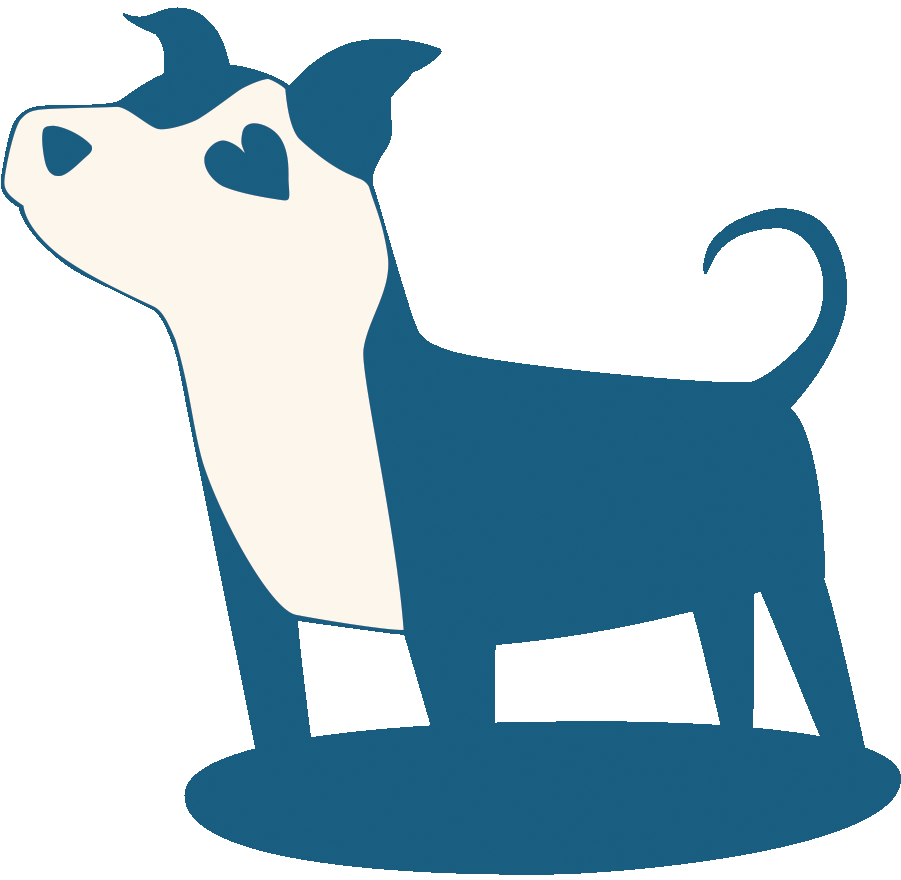Puppy Love - Safe Play for Our Furry Valentines
Happy Valentine's Day!
For many of us humans, this is a day we take to celebrate the special people in our lives. It's easy to know whether or not these feelings are reciprocated. Humans can verbalize how they feel. Phrases such as, "I like you, too" or "I'm sorry, I like someone else better" make intentions pretty clear.
So how do we know what our dogs are saying to each other? How can we tell if our dogs would make good playmates or family members for other dogs? What makes a good dog-dog match?
First things first, we look at body language. Hackles (hair on the back) going up and sharky teeth could mean either positive or negative arousal. Some dogs play like that, and others use those as warning signals. So, we have to look at everything.
Positive body language is bouncy, loose, and often goofy. It might have some play bows, quick turns, and spins with a bunch of running. Ideally, we want to see doggies taking turns; one chases for a while, then they switch. One is down on the ground with the belly up, then they switch.
Breaks are another important aspect of dog-play. Dogs need to stop every so often to allow themselves to deescalate a little. Too much arousal can lead to aggression. It doesn't always, but breaks don't hurt. At the very least, they help less active dogs out when they are playing with more enthusiastic friends.
So, how do we facilitate safe dog play? Well, sadly the dog park isn't the best way to start. There are a lot of risks; health, safety, and behavioral just to name a few. We also know nothing about the pet parents or their knowledge of doggy body language.
When we do doggy playtime in class, I usually choose two dogs at a time. I've been watching them all throughout the class. I think about which dogs would make good pairs. How have they acted whenever they saw each other? How do they normally act in class or when other dogs are moving? Are they generally quiet or exuberant? Are they of similar size and physical ability? These are questions we must think about. I also ask parents if the dogs have played with others before and what their play styles are. I try to match them. I can't automatically match a dog that's quiet and a little fearful with a dog that is always bouncy and fast. I could freak out the fearful guy, exacerbate his fears, and even lead him to bite.

A typical playtime might look like this:
We start with two dogs distracted from each other and on leash in two different corners of the room. We distract them, so they aren't building up with excitement that will just explode and possibly overwhelm the other dog.
Next, we drop the leashes and tell them to go play. (We DO NOT allow them to meet on leash during playtime, class, or break. This can put pulling dogs in a false aggressive stance and give the wrong impression to the other dog.) If they choose to play, that's fine. We stay close by. If they just choose to wander around, that's fine, too. I give them about 30 seconds to play and then instruct the parents to "get their dogs." This means, they go in with something super amazingly yummy, like rinsed canned chicken, and lure their dog back to them. After a quick break, we repeat play, break, etc.

We watch body language the entire time. We look for those play bows, taking turns, breaks in the running (could just be stopping to sniff each other.) We also look for individual doggy location. One dog hiding under a chair is a ginormous clue that playtime is scary for him. Other unhappy clues might be lip-licking, sniffing the ground, looking around quickly, etc.
If one dog is obviously more excited and extreme than the other, we might do a consent test. This involves gently holding that dog back by the hind legs. This is done calmly with all four legs still on the ground and the dog likely standing. Consent tests allow the less excited dog to come up or go away. If he comes back and offers some play behavior, we know he wants to continue. If he goes away, sniffing or back to Mom and Dad, then he's done.
Play time can gradually increase in length, and the leashes can come off once we know the dogs are going to play appropriately. The most important part is that it stays positive with play behavior and breaks. Please see the handout below for more information about appropriate dog play. If you have questions or would like for us to analyze your dogs' play skills and style, feel free to send us an email. We can do a video consult or in-person consult with you!



















